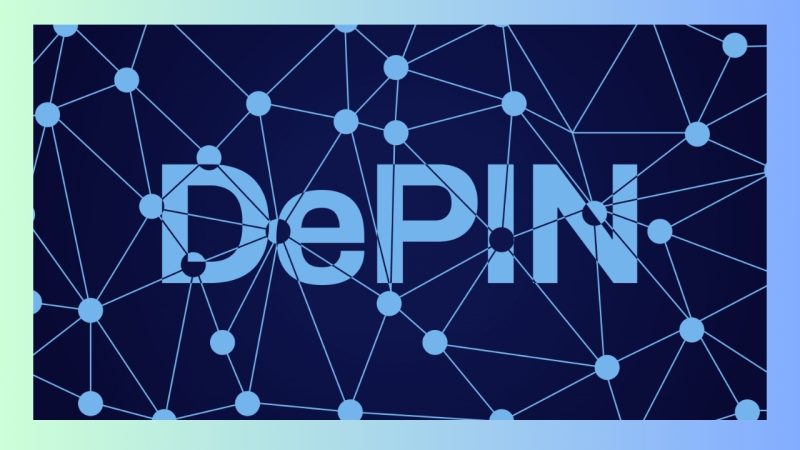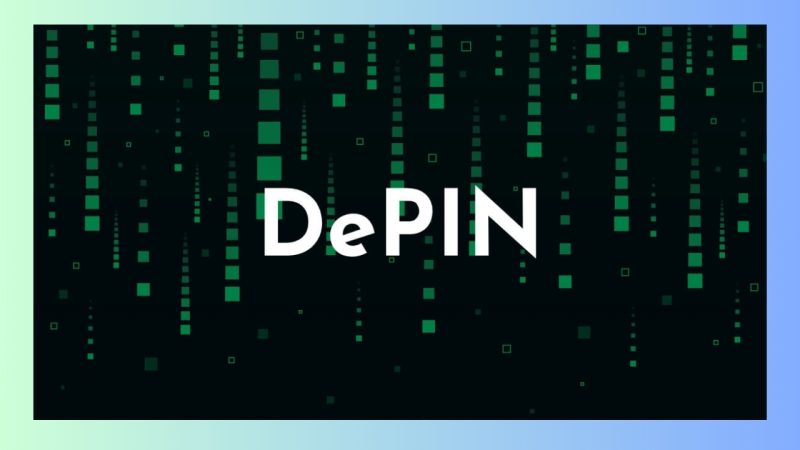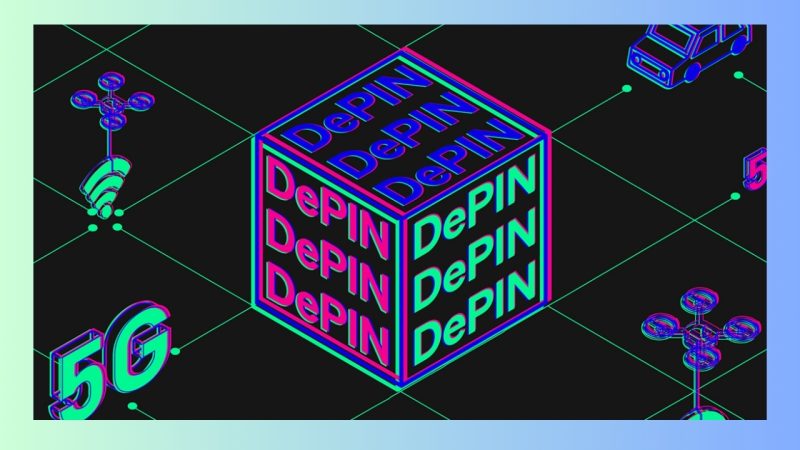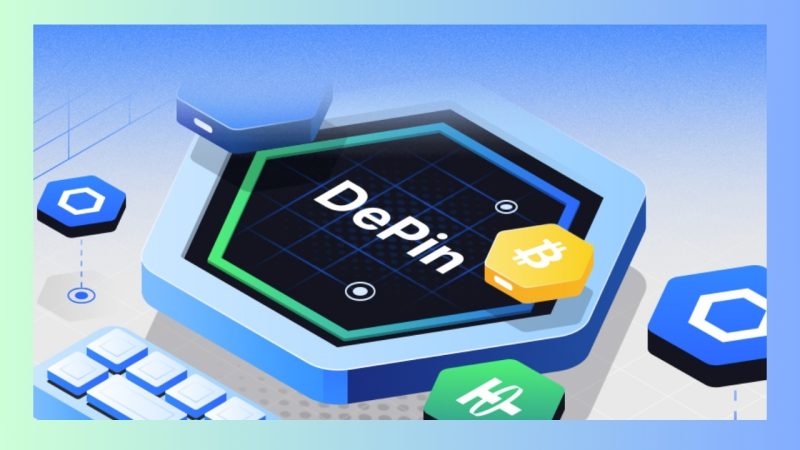DePIN (Decentralized Physical Infrastructure Networks) is an advanced concept in blockchain technology that is beginning to transform the operation of traditional physical infrastructures. It creates decentralized networks that enable individuals and organizations to contribute physical resources such as WiFi, data storage, and energy without relying on intermediaries. Read on to learn more about DePIN, how it works, and its applications across various industries.
What is DePIN?
DePIN (Decentralized Physical Infrastructure Networks) is a decentralized infrastructure network model in which physical resources like WiFi connectivity, data storage, sensors, and energy are distributed and managed through blockchain technology. Instead of being controlled by a central entity, DePIN allows users, businesses, or organizations to participate in providing and sharing physical resources, forming a decentralized network.
This model not only helps reduce operational costs but also offers benefits in terms of security, transparency, and scalability. With blockchain support, every transaction and data within the network is publicly recorded, helping prevent fraud and protecting the rights of participants.
DePIN applications can be found in various fields, including:
- Distributed data storage (e.g., Filecoin)
- Decentralized wireless connectivity (e.g., Helium, for IoT)
- Environmental sensors (for monitoring and analyzing air quality, traffic, etc.)
- Renewable energy and smart grids, optimizing energy distribution and usage.
DePIN represents a significant step forward in applying blockchain technology to physical sectors, changing how traditional infrastructures operate, and paving the way for a more decentralized and sustainable future.
Why is DePIN important?
DePIN (Decentralized Physical Infrastructure Networks) is emerging as a key trend in the tech industry because of its ability to address several issues that traditional infrastructure models have yet to resolve. Here are the main reasons why this model is becoming increasingly important:
Enhancing decentralization and security
DePIN uses blockchain technology to build decentralized infrastructure networks. This means physical resources such as WiFi, data storage, energy, and sensors are not controlled by a single entity but are distributed across multiple network nodes. This minimizes the risk of external attacks and system failures caused by issues with a data center or service provider.
Moreover, blockchain ensures that all transactions and changes in the network are publicly recorded, verifiable, and immutable, enhancing the security and trustworthiness of the system while preventing fraud and dishonest activities.
Improving accessibility and efficiency
DePIN reduces costs and increases access to essential infrastructure services such as the internet, energy, and data storage. Rather than relying on a few large companies to provide services, DePIN creates opportunities for individuals or small groups to participate in providing and sharing resources. This expands the reach of services to areas or communities that may not have access to reliable infrastructure.
Disaster and crisis resilience
One of the strengths of DePIN is its ability to function efficiently in emergency or disaster situations. The decentralized model allows services to remain operational even if a significant portion of traditional infrastructure is disrupted. For example, in cases of power outages or failures in centralized communication systems, nodes within the DePIN network can continue to operate, providing essential services to the community.
Encouraging innovation and competition
DePIN promotes competition and innovation by opening up opportunities for individuals and small businesses to provide infrastructure services. When there is no monopoly from large companies, the market becomes more diverse and creative. This not only helps reduce costs but also offers more choices for consumers.
Fostering green and sustainable energy development
DePIN can facilitate the deployment of renewable energy solutions more easily. For example, the use of microgrids and solar panels in the DePIN model allows for efficient energy storage and distribution, reducing dependence on fossil fuels. Additionally, by integrating renewable energy into the decentralized system, this model helps reduce carbon emissions and promotes sustainability goals in communities.
Reducing investment and administrative costs
Implementing infrastructure in a decentralized model, DePIN can eliminate the high upfront investment costs and complex administrative procedures often faced by traditional systems. Communities or small businesses can quickly participate in deploying and maintaining infrastructure services, saving time and money. This flexibility also makes it easier to meet local demands and develop services in areas lacking infrastructure.
Adaptability to local needs
The DePIN model is particularly beneficial when adapting to specific regional or community requirements. Instead of adhering to the central regulations and standards of traditional systems, DePIN allows local groups to decide how to implement and maintain services. This creates flexibility and customization, enabling communities to grow in ways that align with their unique characteristics and needs.
How does DePIN work?
The operational mechanism of DePIN is based on physical hardware, peer-to-peer networks, and modern security protocols. Let’s explore how this model works through the key components outlined below:
Physical hardware and Network nodes
DePIN utilizes physical hardware nodes, including devices like sensors, wireless access points, internet routers, and computing devices. These nodes not only connect DePIN to the physical world but also act as “utilities” within the community. Both individuals and organizations can own and operate their nodes, contributing to the shared network, much like essential services in a neighborhood that everyone can participate in and maintain.
Blockchain and smart contracts
All activities within the DePIN network are recorded on the blockchain, ensuring transparency and openness. Each transaction or interaction is verified by blockchain and automatically shares rewards between participants. Blockchain functions like a public ledger, where all actions and transactions are recorded transparently and cannot be altered.
Smart contracts and the Internet of Things (IoT) automatically execute transactions when certain conditions are met. This ensures that all network transactions run smoothly, accurately, and without third-party intervention.
Economic model and cryptocurrency rewards
DePIN incentivizes individuals and organizations to participate in the network by providing cryptocurrency rewards. Participants who contribute resources such as bandwidth, data storage, or energy to the system receive rewards in the form of tokens. This dynamic incentive mechanism helps attract and retain community participation while building and growing the infrastructure.
This economic model not only supports the system but also fosters collaboration between individuals and organizations, creating a sustainable ecosystem that operates autonomously without centralized management.
Peer-to-Peer Network and decentralized management
A key feature of DePIN is the use of a peer-to-peer (P2P) network to decentralize ownership and management of physical infrastructure. This means DePIN allows direct interaction between infrastructure providers and consumers without relying on intermediaries or centralized authorities. This system operates like a neighborhood, where people can transact and cooperate directly without the need for a third-party intermediary.
Security and data encryption
DePIN employs advanced security protocols and data encryption to protect sensitive data, such as infrastructure configurations and system operation data. These protective measures prevent cyber threats and ensure no unauthorized changes are made to critical information. Similar to using a secure lock to protect assets, DePIN’s security protocols help ensure the safety of shared resources within the community.
Use cases for DePIN
Here are some potential use cases of DePIN, showcasing its flexibility and real-world potential:
- Decentralized Wi-Fi Networks: One common application of DePIN is the creation of decentralized Wi-Fi networks. Rather than depending on centralized ISPs, individuals or organizations can set up and operate their own Wi-Fi hotspots. Participants are rewarded with cryptocurrency based on their contributions to the network. These Wi-Fi hotspots not only help connect underserved areas but also create a global Wi-Fi sharing system, where users can contribute and earn rewards without paying traditional service providers.
- IoT infrastructure: This model can support large-scale IoT deployments. IoT devices such as environmental sensors, health trackers, and surveillance systems can be connected and managed through a decentralized network. Each IoT device can contribute to the shared infrastructure and earn cryptocurrency rewards for sharing data and services.
- Decentralized renewable energy grids: This model can create a decentralized energy grid where households or businesses using renewable energy (e.g., solar, wind) can share excess energy with underserved areas. Participants use energy meters and control devices, receiving rewards based on the energy they contribute to the system. This system optimizes renewable energy use and reduces reliance on centralized energy sources.
- Decentralized data storage infrastructure: With the growing need for big data and cloud storage applications, DePIN can provide a decentralized storage model, where data is distributed and stored on network nodes rather than centralized data centers. Participants can join the network by providing unused storage capacity and earn rewards for contributing to data storage and protection.
- Decentralized transportation and ride-sharing Networks: This model can support the development of decentralized transportation networks where users can rent or share their vehicles (e.g., cars, bikes, scooters) with the community. Participants earn rewards based on the frequency and duration of their rentals or shared rides. Such applications help alleviate traffic congestion, reduce transportation costs, and promote the use of environmentally-friendly vehicles.
- Decentralized network infrastructure management: This model can also support the management of network infrastructures such as 5G networks and wireless internet. Instead of relying solely on telecom giants to deploy and maintain these networks, DePIN allows individuals, businesses, or communities to participate in setting up and maintaining local wireless networks. For instance, a community might set up small 5G base stations to provide service to areas lacking coverage.
- Physical asset ownership and management: This model can be applied to the ownership and management of physical assets in industries like real estate or industrial infrastructure. Organizations or individuals can own physical assets (e.g., buildings, public works) and allow others to participate in managing or maintaining them, earning rewards for their contributions. This concept can apply across various industries, from smart building management to public transportation systems, where people contribute to the upkeep and development of infrastructure.
Challenges and drawbacks of DePIN
Although DePIN (Decentralized Physical Infrastructure Networks) offers immense potential and opportunities, several challenges need to be addressed for widespread adoption:
- Regulatory hurdles: As DePIN operates in decentralized and potentially disruptive areas of infrastructure, legal and regulatory frameworks in many countries are still evolving. There is uncertainty about how governments will regulate decentralized systems, especially regarding the ownership and usage of physical infrastructure and resources. Unclear regulations may hinder the growth of DePIN and lead to compliance risks for participants.
- Energy consumption and efficiency: Although DePIN allows for the creation of decentralized renewable energy grids, the operation of physical infrastructure, such as nodes and servers, can consume a significant amount of energy. Participants must find ways to optimize the energy efficiency of these nodes while maintaining sustainable practices, as high energy consumption could raise environmental concerns.
- Network scalability: While the decentralized nature of DePIN can reduce the reliance on centralized authorities, it can also lead to scalability issues. As the network expands, managing and synchronizing all the nodes and resources may become challenging, requiring additional technical infrastructure to ensure smooth operation.
- Security concerns: Although blockchain provides security and transparency, the physical devices used in DePIN networks may still be vulnerable to hacks or tampering. Ensuring the security of devices and networks, including encryption and monitoring systems, is a critical challenge for DePIN implementations.
- Initial adoption and user education: DePIN requires widespread user participation, and in many cases, educating users on how to contribute and utilize the network will be necessary. Moreover, convincing businesses and consumers to switch from traditional infrastructure models to decentralized ones may face resistance due to unfamiliarity and reluctance to adopt new technologies.
Thus, DePIN (Decentralized Physical Infrastructure Networks) is opening up a great opportunity to change the way traditional physical infrastructure operates. With its ability to decentralize control and provide high security, DePIN promises to create a new era for industries such as data storage, wireless connectivity, and renewable energy. Although there are still many challenges, DePIN has tremendous potential and will continue to play an important role in building a sustainable decentralized digital ecosystem.
Follow Solution Of Blockchain to stay updated with more useful information and knowledge.




